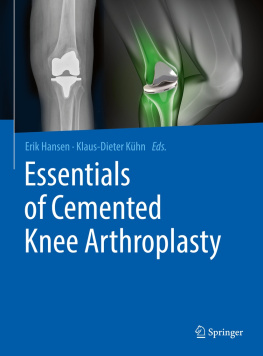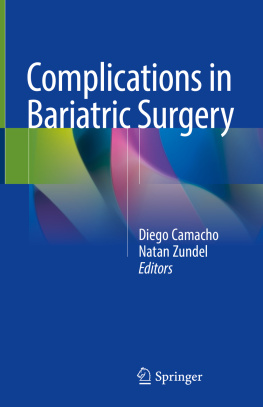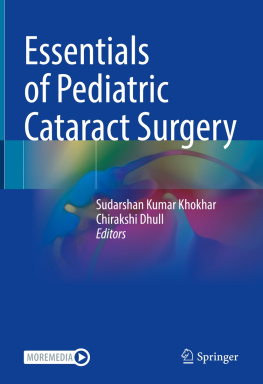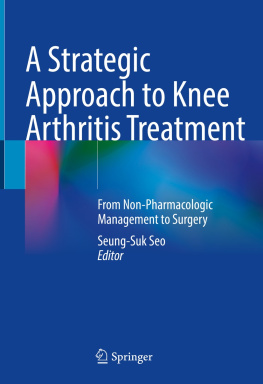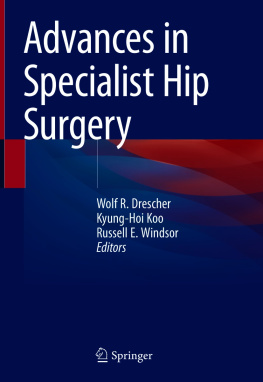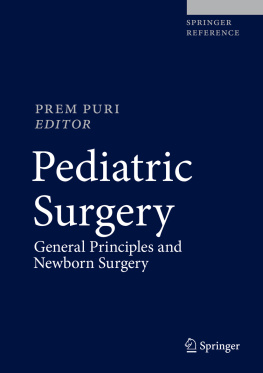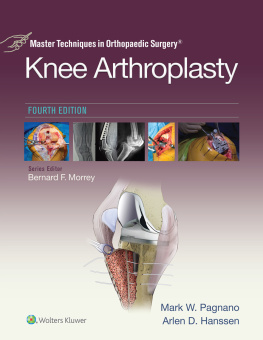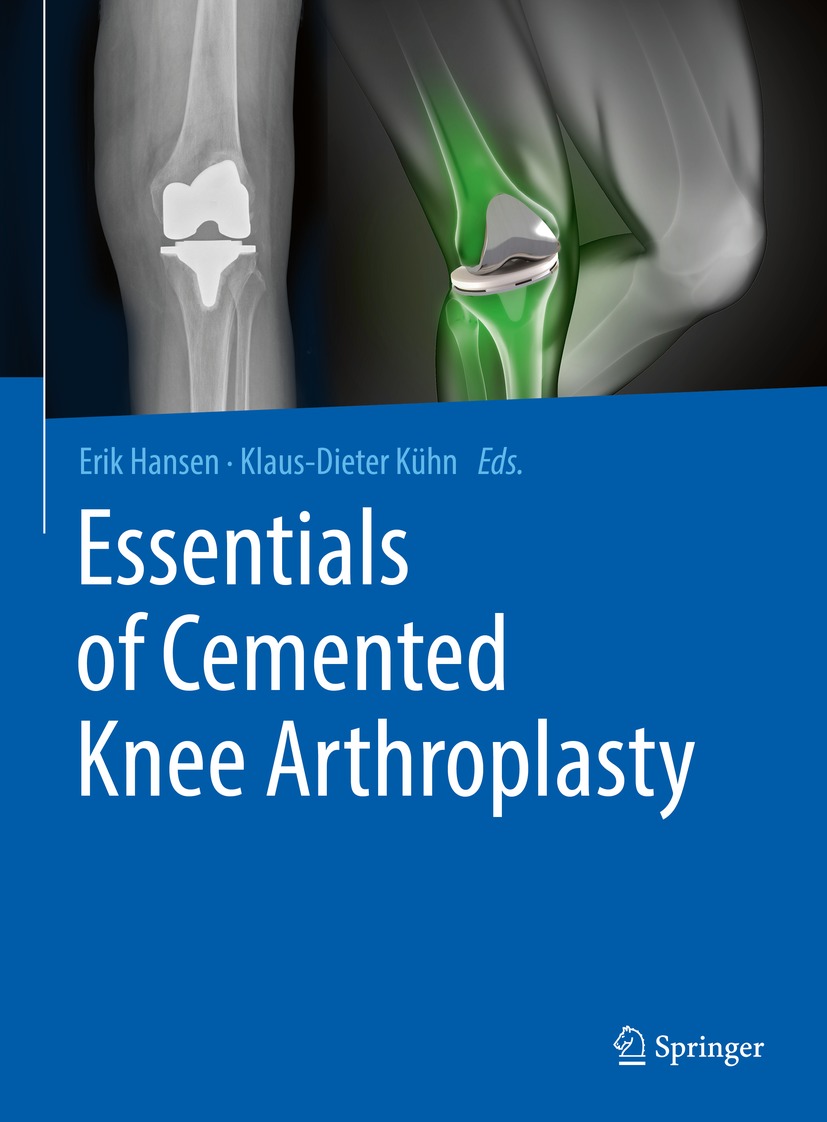Editors
Erik Hansen and Klaus-Dieter Khn
Essentials of Cemented Knee Arthroplasty
With forewords from Michael D. Ries (University of California, San Francisco) and Patrick Sadoghi (Medical University of Graz, Austria)

Logo of the publisher
Editors
Erik Hansen
Department of Orthopaedic Surgery, University of California San Francisco UCSF, San Francisco, CA, USA
Klaus-Dieter Khn
Department of Orthopedic Surgery, Medical University of Graz, Graz, Austria
ISBN 978-3-662-63112-6 e-ISBN 978-3-662-63113-3
https://doi.org/10.1007/978-3-662-63113-3
The Editor(s) (if applicable) and The Author(s), under exclusive license to Springer-Verlag GmbH, DE, part of Springer Nature 2022
This work is subject to copyright. All rights are solely and exclusively licensed by the Publisher, whether the whole or part of the material is concerned, specifically the rights of translation, reprinting, reuse of illustrations, recitation, broadcasting, reproduction on microfilms or in any other physical way, and transmission or information storage and retrieval, electronic adaptation, computer software, or by similar or dissimilar methodology now known or hereafter developed.
The use of general descriptive names, registered names, trademarks, service marks, etc. in this publication does not imply, even in the absence of a specific statement, that such names are exempt from the relevant protective laws and regulations and therefore free for general use.
The publisher, the authors and the editors are safe to assume that the advice and information in this book are believed to be true and accurate at the date of publication. Neither the publisher nor the authors or the editors give a warranty, expressed or implied, with respect to the material contained herein or for any errors or omissions that may have been made. The publisher remains neutral with regard to jurisdictional claims in published maps and institutional affiliations.
Cover illustration Left figure: Hansen E., Khn K.D. Essentials of cemented Knee Arthroplasty (2022).
Chapter 28 Zaid M.B., Vail T.P. Posterior Stabilized Total Knee Arthroplasty. Fig. 28.2 left / Right figure Heraeus Medical GmbH.
This Springer imprint is published by the registered company Springer-Verlag GmbH, DE part of Springer Nature.
The registered company address is: Heidelberger Platz 3, 14197 Berlin, Germany
Foreword
The final surgical treatment of end-stage osteoarthritis (OA) of the knee joint is total knee arthroplasty (TKA), with over 1 million cases performed annually worldwide, including over 15.000 cases per year in Austria, and more than 350 of these implanted by the Division of Knee Surgery at the Department of Orthopaedics and Trauma at the Medical University of Graz.
Contemporary TKA has substantially evolved over the past 130 years, since the first prosthesis was implanted early in 1890 by Themistocles Gluck in a 17-year-old female suffering from a tuberculous knee joint. The prosthesis was made of ivory in a hinged design as Gluck was the first surgeon who additionally experimented with bone cement including copper amalgam, plaster of Paris, and stone putty, which hardened rapidly after mixing. Whilst many of Glucks devices ultimately failed because of chronic infection, we have to admit that today, 130 years later, we still face the same obstacles, namely the best materials producing the lowest wear, the ideal alignment and biomechanics, the cementation technique (Gluck favoured osseointegration although his implants could be well fixed with cement alone), and the treatment of early or late infection after TKA.
130 years later, we still face equal challenges such as revision surgery after failed TKA (Glucks ivory prosthesis had to be removed), the adequate management of postoperative complications (some of his cases ended in fistula formation), selection of the ideal patient for surgery (Gluck already recognized outcome of surgeries after previous infections) and improvement of rehabilitation or even fast-track approaches. All these aspects are still in the focus of research worldwide, and various projects are currently performed at our department in Graz, Austria.
In addition, various new technologies emerged over the past decades, such as robotics, patient-specific instrumentation, preoperative planning and computer-assisted surgery, which had significant impact with respect to accuracy and reproducibility of our results as knee surgeons. However, various level II studies performed at our own institution did not reveal significant clinical benefits for our patients operated on by high-volume surgeons and have, therefore, not been implemented in our daily practice.
In 2020, our approach in Graz consisted of systematic preoperative and postoperative patients assessment (including 100% of the assessed patients in level IV studies and approx. 75% of the assessed patients in level II studies); a totally cemented, fixed TKA design using a cobalt-chromium-molybdenum (CoCrMo) alloy with or without titanium-nitride coating; surgical helmet systems; an extension gap first technique with conventional (mechanical) or kinematic alignment; and patient-specific instrumentation in case of intramedullary pathologies.
We can be excited regarding the future of TKA and I sincerely hope that this book feeds your interest on this ongoing scientific field.
Patrick Sadoghi
Foreword
It is with great pleasure that I write the foreword to Essentials of Cemented Knee Arthroplasty, edited by Erik Hansen and Klaus-Dieter Khn. The US and European editors have done a remarkable job of assembling international experts in the field to contribute timely and well-written chapters on a topic which is considered the gold standard for total knee arthroplasty, but has evolved and developed over the past 50 years.
Cemented total knee arthroplasty remains one of the most clinically successful, cost-effective treatments for degenerative or inflammatory arthritis of the knee. It is anticipated that the volume of procedures performed in the coming decades will grow significantly. However, even a small proportion of replacements which do not meet expectations suggest that there is still room for improvement in the outcome of this procedure for a substantial number of patients.
Essentials of Cemented Knee Arthroplasty is a very comprehensive one-stop-shop book. It includes separate parts dedicated to surgical indications, surgical techniques, clinical outcomes, partial and total knee implant options, implant design, and PMMA. It goes further to discuss complications and management of failed total knee arthroplasty. Other topics covering healthcare economics and new technology which may influence the future role of total knee arthroplasty have been included. In short, there are few texts which are as all-encompassing and written by such a collection of international experts.
There is a strong focus on the subject of polymethylmethacrylate (PMMA) with many chapters highlighting tips and tricks of using bone cement during surgery. There are also numerous chapters dedicated to related topics, including the pros and cons of antibiotic-loaded bone cement (ALBC), antibiotic cement spacers for treatment of periprosthetic joint infection, and use of bone cement in revision total knee arthroplasty.

